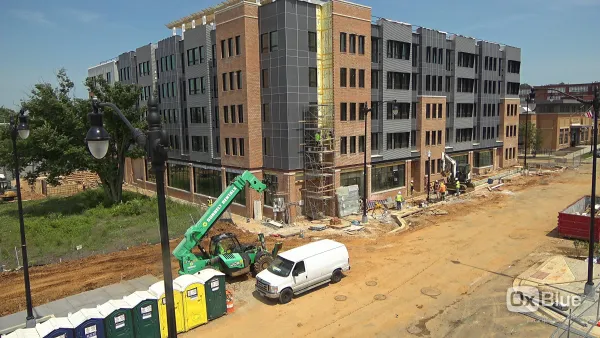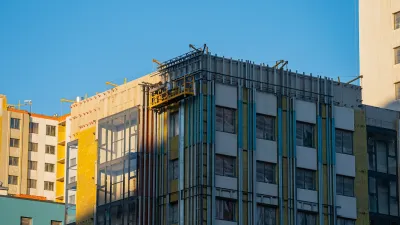We don't need to build new energy efficient homes as much as we need to refurbish the existing housing stock to make it more energy efficient, writes Richard Moe of the National Trust for Historic Preservation.
"Never before has America had so many compelling reasons to preserve the homes in its older residential neighborhoods. We need to reduce energy consumption and carbon emissions. We want to create jobs, and revitalize the neighborhoods where millions of Americans live. All of this could be accomplished by making older homes more energy-efficient.
Older homes are particularly wasteful: Homes built in 1939 or before use around 50 percent more energy per square foot than those constructed in 2000. But with significant improvements and retrofits, these structures could perform on a par with newer homes.
Experience has shown that virtually any older or historic house can become more energy-efficient without losing its character. The labor-intensive process of rehabilitating older buildings would also create jobs, and this labor can't be shipped overseas. The wages would stay in the community, supporting local businesses and significantly increasing household incomes - just the kind of boost the American economy needs right now."
FULL STORY: This Old Wasteful House

Planetizen Federal Action Tracker
A weekly monitor of how Trump’s orders and actions are impacting planners and planning in America.

Maui's Vacation Rental Debate Turns Ugly
Verbal attacks, misinformation campaigns and fistfights plague a high-stakes debate to convert thousands of vacation rentals into long-term housing.

San Francisco Suspends Traffic Calming Amidst Record Deaths
Citing “a challenging fiscal landscape,” the city will cease the program on the heels of 42 traffic deaths, including 24 pedestrians.

Defunct Pittsburgh Power Plant to Become Residential Tower
A decommissioned steam heat plant will be redeveloped into almost 100 affordable housing units.

Trump Prompts Restructuring of Transportation Research Board in “Unprecedented Overreach”
The TRB has eliminated more than half of its committees including those focused on climate, equity, and cities.

Amtrak Rolls Out New Orleans to Alabama “Mardi Gras” Train
The new service will operate morning and evening departures between Mobile and New Orleans.
Urban Design for Planners 1: Software Tools
This six-course series explores essential urban design concepts using open source software and equips planners with the tools they need to participate fully in the urban design process.
Planning for Universal Design
Learn the tools for implementing Universal Design in planning regulations.
Heyer Gruel & Associates PA
JM Goldson LLC
Custer County Colorado
City of Camden Redevelopment Agency
City of Astoria
Transportation Research & Education Center (TREC) at Portland State University
Jefferson Parish Government
Camden Redevelopment Agency
City of Claremont





























